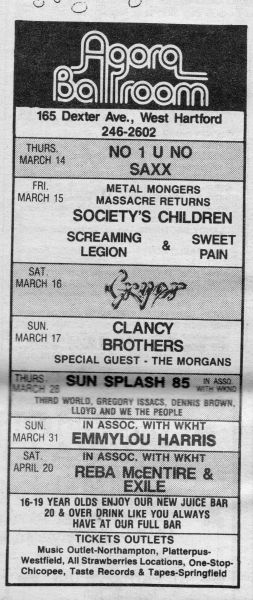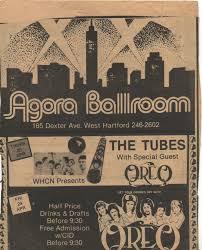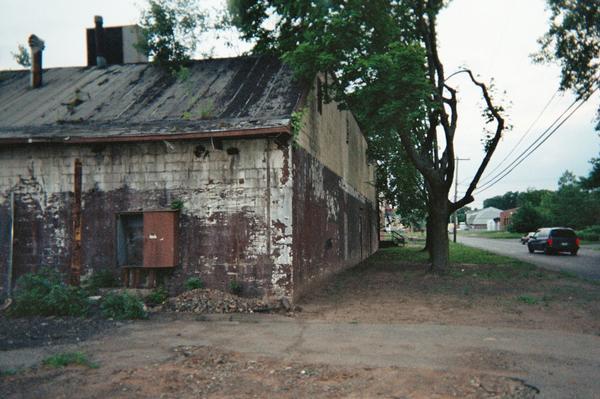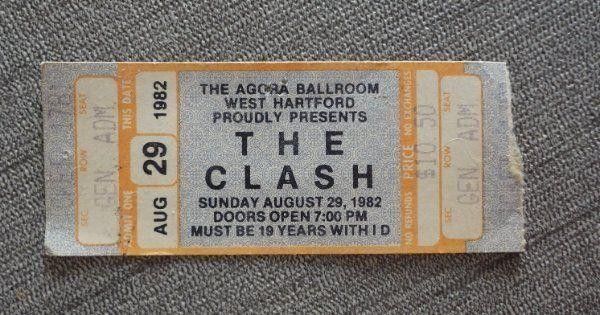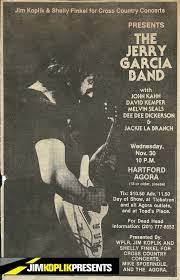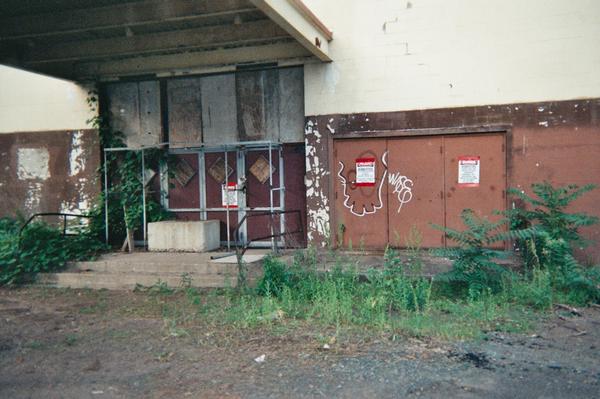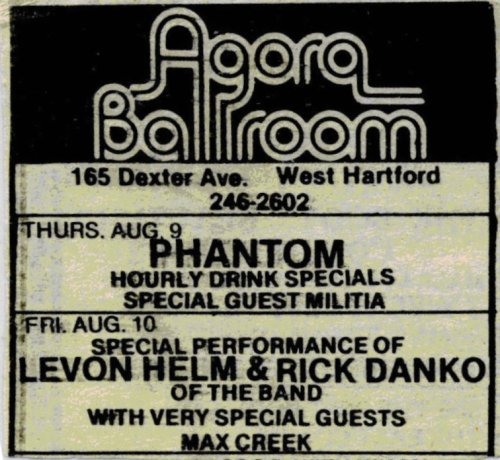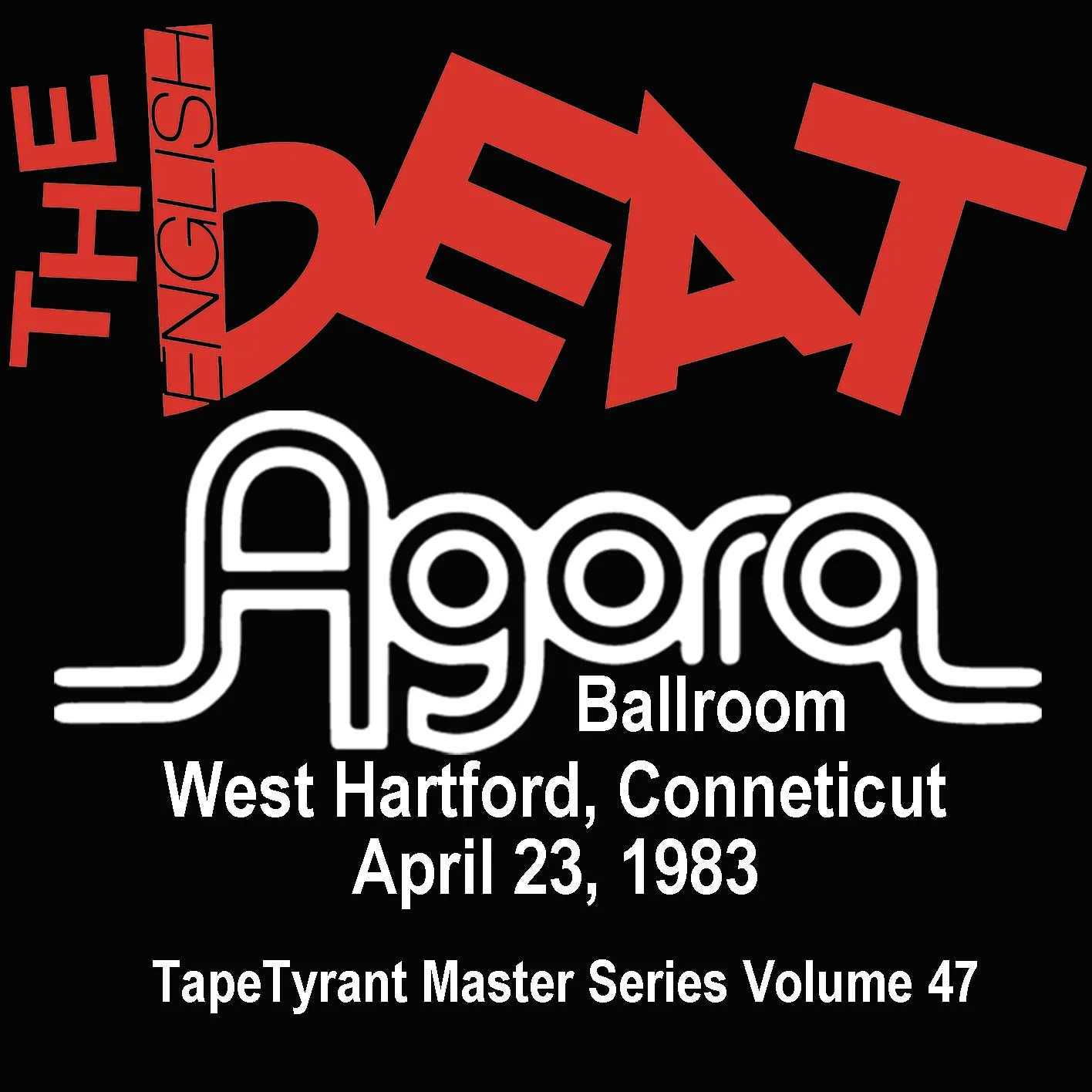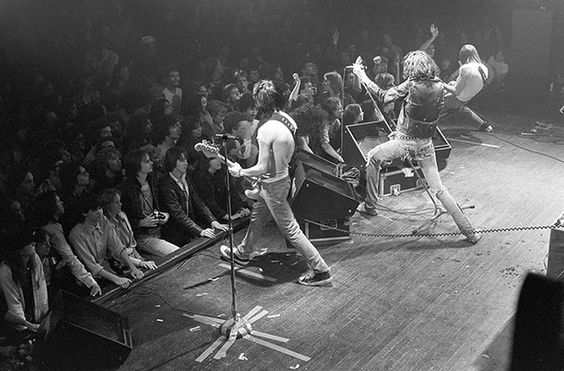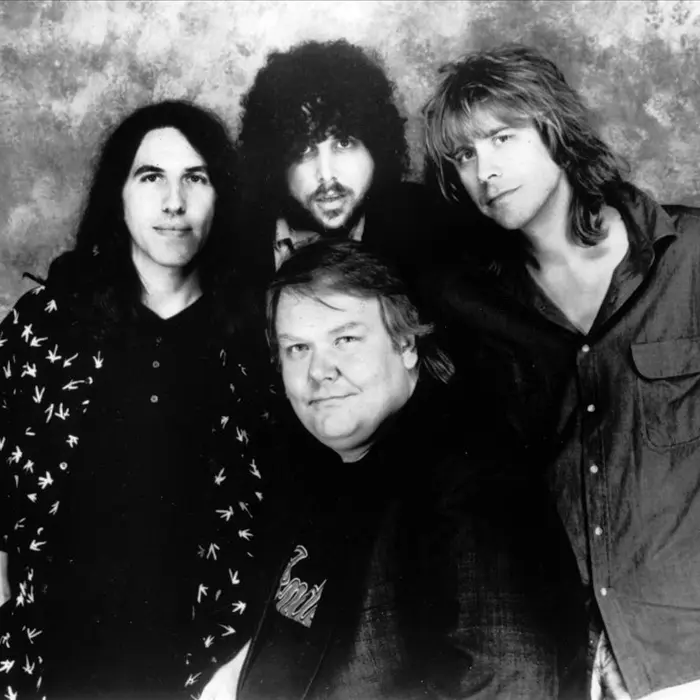Agora Ballroom
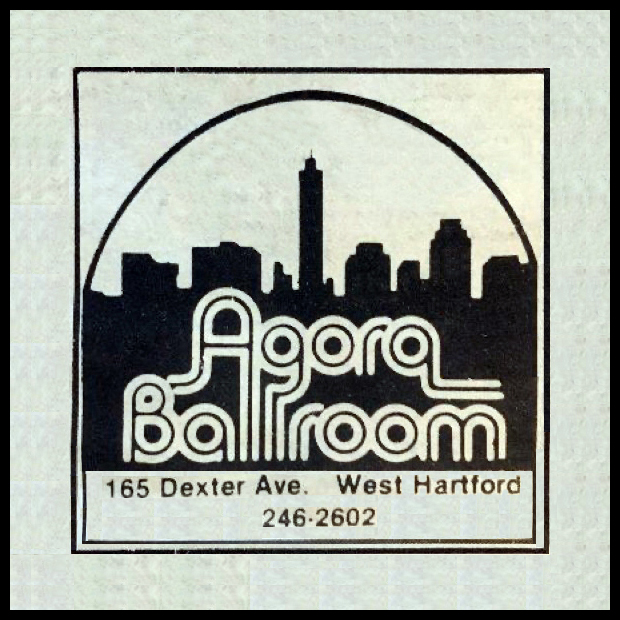
The Agora Theatre and Ballroom in Cleveland, Ohio, is located in a century-old, restored opera house just three miles from the Rock & Roll Hall of Fame. The now-defunct Agora Ballroom in West Hartford, Connecticut, on the other hand, was in an old typewriter warehouse atop a landfill at 165 Dexter Avenue, just steps away from the local DPW. But despite that humble pedigree, the list of musical acts that graced the stage at the Agora Ballroom rivals its Cleveland-based namesake and includes a number of artists who are now enshrined in the Rock & Roll Hall of Fame.
Building history
The concrete-and-steel building that became the Agora Ballroom opened as a warehouse for Royal Typewriter in 1963 (author’s note: I typed all of my college papers on a Royal typewriter, so I guess I am old), but it seems its destiny was always to be a live-music venue. After Royal left in 1968, it was converted into a bowling alley but the landfill below shifted, causing the lanes to warp.
After sitting vacant until 1973, it sprung back to life as Columbia Music Hall, though that name is a bit of a misnomer since in addition to music, it hosted boxing matches and other events, including an indoor circus, the way that Boston Garden once did. The venue was short-lived, becoming the West Hartford Music Hall in late 1974, then Finnochio’s (a popular gay bar) in 1976. In late 1976 and 1977, the owners tried to ride the disco wave, but the space soon morphed into The Hard Rock Café (no relation to the popular chain) and by 1979 it was called Stage West.
Becoming the Agora Theatre, Capacity, Layout
In 1982, the owners of the Agora Theatre and Ballroom in Cleveland took over the West Hartford building, adding it to their growing list of venues across the US. Their stable of nationwide concert halls ultimately grew to 12 but, as of 2021, only the Agora Theatre and Ballroom in Cleveland remains. The capacity of the newly minted Agora Ballroom remains open to debate, with estimates ranging from 1,000 to 5,000, though the latter seems extremely high. There was a main stage and a smaller side stage, a loft that bisected the room and the club could be walled off to provide a 500-capacity room that used only the side stage. Most of the time, it was all standing-room-only.
Perhaps foreshadowing the popularity of outdoor concert sheds, the Agora had a 900-vehicle parking lot, which was ideally suited for pre-show tailgating. The drinking age in Connecticut did not increase to 21 until late 1985 and the club (perhaps unwisely) allowed re-entry, so trips to the parking lot to “refuel” between acts were quite common.
Notable appearances
Former co-owner Hank Zukowski estimates that the Agora hosted over 1,000 concerts between 1982 and 1989 and the list of acts that appeared is a who’s who of ‘70s/’80s rock royalty, including Talking Heads, The Clash, Peter Gabriel and The Ramones, the last of which appeared a dozen times. Metal legends Anthrax, Megadeth, Metallica, Motörhead, Overkill and Slayer performed at the Agora, most of them more than once. Blues artists such as Johnny Winter and Stevie Ray Vaughan took the stage, as did Aerosmith in 1984 (between their 1970s rise to fame and their 1987 comeback).
In addition to acts from outside New England, the Agora regularly hosted bands from the inside the region including NRBQ and Connecticut-based jam band Max Creek, that latter of which considered the venue its home base. “In many people’s minds, it was the best place in the area to hear music, and since then, no place in Connecticut and western Massachusetts has come close to what it was,” Max Creek’s Mark Mercier told the Hartford Courant in 2009. “Fans loved it. Lots of room to dance. A great big room with a wooden stage,” added the band’s one-time drummer Greg DeGuglielmo. “The sound was tremendous. The old wood in the place really resonated.”
As is often the case with shows at smaller venues, some things had to be seen to be believed. Christian heavy metal band Stryper threw tiny Bibles into the crowd during one of its shows. The late and legendary queen of punk, Wendy O. Williams (frontwoman of The Plasmatics), blew up a Cadillac during a gig at the Agora. One regular at the venue remembers seeing Billy Bragg (on his first US tour) playing with his amp strapped to his back. He also recalls seeing The Psychedelic Furs’ vocalist Richard Butler sitting on his monitor having a smoke while he sang. This writer witnessed an unfortunate soul attempt to stage dive from the side stage into a half-filled house at a Stranglers show. It did not end well.
At their Agora stop on their ill-fated final post-Mick Jones tour, The Clash delayed the start of their show to allow the crowd from the nearby Bushnell Memorial Auditorium to migrate over after The Pretenders’ concert in hopes of filling the venue (which worked). In the fall of 1986, NRBQ refused to get on stage since it was Game six of the World Series and the Boston Red Sox were playing the New York Mets. The band went on after the game ended, but by then the Red Sox fans had turned hostile (because of the famous error by Sox first baseman Bill Buckner that resulted in the Mets winning the game).
Methane odor, Vandalization, Closing, Demolition
Even at the height of its popularity, the venue was unable to conceal its roots, as patrons, employees and artists couldn’t help but smell the occasional whiffs of methane that reminded everyone of the landfill below. And despite its local renown, the Agora had enemies and suffered a calamity from which it never recovered: In the middle of a July 1987 night, vandals broke into the hall and all but destroyed it. The perpetrators stole sound equipment, spray painted walls and used chainsaws to cut the load-bearing posts that supported the balcony. Police estimated that the vandals spent hours inside the venue wreaking havoc and theorized that it was an inside job, though no motive was ever established, and no arrests were ever made.
A valiant effort was made to re-open the Agora, but it was not to be. In 1990, the Forum, the last club to occupy the space, closed for good. In June 2009, after 20 years of disuse, building owners Arborio Corporation turned their excavators on the once-popular hall and, in a matter of hours, the building was no more. Today, 165 Dexter Avenue is home to Agora Recycled Materials, so if you go there looking for rock, all you’ll find is gravel.
(by Lincoln Purdy)

